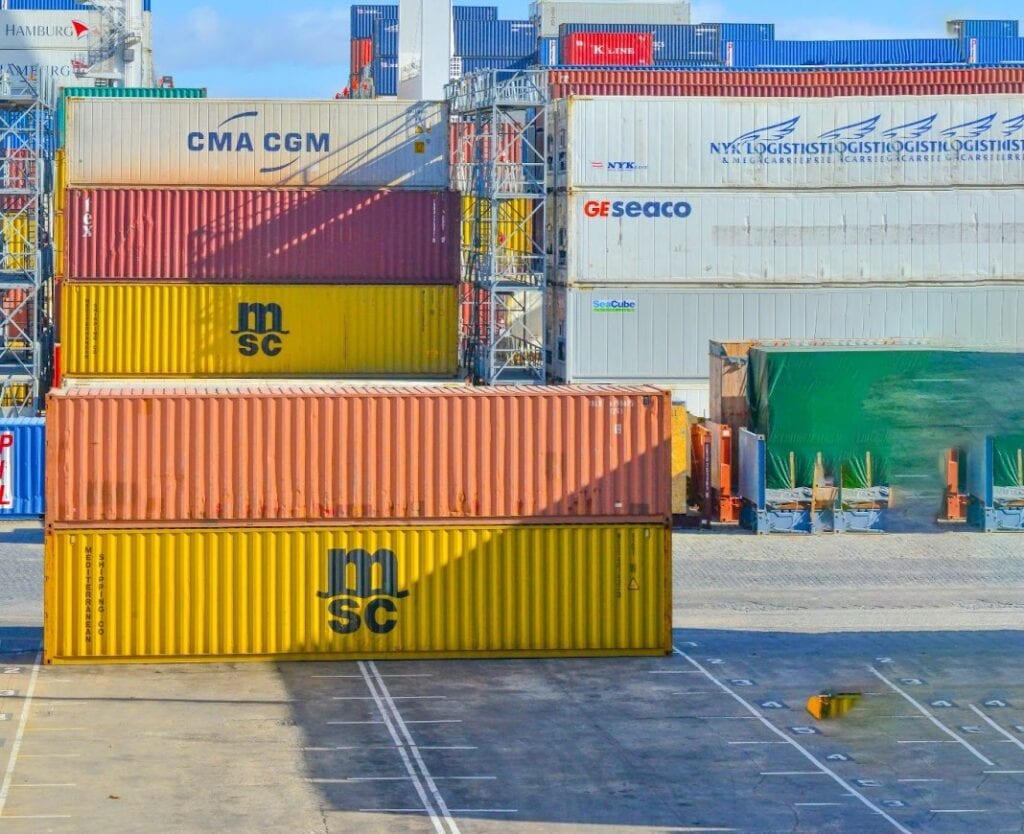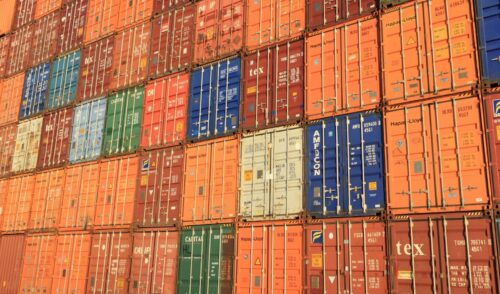Container Freight Station: Definition, Purpose, and Benefits

In the past, items from the smaller shipments would be loaded and sorted during onboarding. But today, Container Freight Station (CFS) has changed the transportation system for smaller and larger shipments.
In this article, we’ll highlight the meaning of a CFS, its purpose, and its benefits.
What Is a Container Freight Station?
A CFS is a facility where less than container load (LCL) cargo is consolidated or deconsolidated prior to export or import. Consolidation combines multiple LCL shipments to create full container loads (FCL), whereas deconsolidation involves separating the LCL shipments.
This facility can also temporarily store goods awaiting importation or exportation. Additionally, it handles custom clearance procedures for cargo.
CFSs are generally located near major airports, railway hubs, harbors, large warehouses, or terminals. This is because cargo needs to be transported to its final destination once the consolidation or deconsolidation process is over.
Typically, a CFS is run by shipping lines, trucking companies, or logistics service providers.
Functions and Processes of Container Freight Stations
A CFS offers many services to people in the importing and exporting business, with many processes taking place in these stations. Some of the functions and processes of a CFS are:
Receiving and Dispatching Cargo
One of the main functions of a CFS is to receive and send cargo to and from a freight station. It entails moving shipping containers into and out of the CFS and between CFSs and yards in ports.
In some instances, a CFS may handle transshipment movements such as those between the station and a tracking stand or rail yard. These containers may be full, half loaded, or empty, ready for loading.
Container Maintenance
The staff regularly maintains shipment containers by pest-proofing them at the CFS. They also clean the containers regularly to get rid of dust and debris. Additionally, they protect them from coming into contact with water since it may cause rust.
One of the benefits of regularly maintaining shipment containers is that they’ll remain in good condition, protecting your items from damage. Container maintenance also allows the CFS workers to identify small issues before they advance, lowering the risk of costly repairs in the future.
Stuff Containers
Container stuffing refers to loading a container for shipping at container freight stations.
The workers at the CFS usually follow specific guidelines when stuffing containers. For instance, they place protective materials between items when packing to prevent them from shifting during shipping. They also pack the correct number of items in each container to avoid space wastage or goods damage.
When the loaded containers reach the destination port, workers will de-stuff them.
Arrange Empty Containers
When empty containers arrive at the container yard, the workers arrange them according to sizes and colors. This also prevents unnecessary accidents at freight stations. When arranging containers, they tally them to ensure their records match.
Mark Containers
CFSs normally receive goods from several customers. Handling such goods can be overwhelming and confusing.
To avoid such issues, workers at the container freight stations mark the loaded containers using the shipper or consignee’s name. They also include package numbers, destination port, port marks, and freight forwarder’s name for easy identification.
Loading and Unloading Containers
Container loading and unloading are common activities at any CFS facility. Most CFSs use cranes to load and unload containers since it’s a safe and quick method. A crane can also lift heavy containers with so much ease. Alternatively, they may use a heavy forklift, side loader, or reach stacker, depending on what’s available or the container size.
Keeping the Goods Safe
Another obvious function of a CFS is to keep items safe before the final delivery by storing them in a good environment.
A CFS helps handle the goods carefully during stuffing, loading, and unloading so they can reach their destination CFS while still in good condition. Most importantly, CFS companies employ qualified security personnel to protect the loaded containers from theft.
Transit Operations
CFS companies receive many shipments in a day. Once they finish the clearance process with the customs agents, they will ask you to come for them so they can create space for others.
If you cannot pick up the items due to unavoidable circumstances, the CFS can offer to deliver them to your preferred destination. Depending on your preference, you can choose rail or road transit methods.
The two major processes in a CFS are the export and import process. Here is a look at these two processes:
Export Process
- The exporter places items on a truck and takes them to a CFS with a shipping bill
- The goods are unloaded and handed over to the CFS custodian
- Items go through customs clearance processes
- After customs officials sign the shipment bill with “allow export order,” CFS workers stuff goods into containers
- The CFS seals the containers and delivers them to the port for export
Import Process
- The importer submits a general import manifest (IGM) at the port with information on cargo, exporter, importer, ship/aircraft, and CFS
- Containers received at the port or terminal are sent to CFS
- The CFS offloads, stacks, and de-stuffs cargo
- The Cargo owner presents the bill of entry, clears the goods, and then proceeds to pay
- Customs signs off on a bill of entry with an “out of charge” directive
- The CFS custodian issues to the importer for cargo release
Benefits of Container Freight Stations

There are several benefits of using CFSs.
Saves Time
Typically, custom clearance procedures are tiresome and time-consuming. A CFS saves time because the facility handles the customs clearance procedures for imported and exported goods on your behalf.
Maintains Shipment Data
A CFS facility records and keeps all vital information about a particular shipment, including exporter names, cargo details, origin and destination points, carrier names, and truck numbers. This way, no shipment can get lost at the facility.
Enhances Cargo Security
You don’t have to worry about their safety when using a CFS for exporting or transporting goods. The facility has highly skilled workers who handle your goods carefully during loading and unloading. They also store them in good condition while awaiting clearance.
Saves Cost
Using a CFS facility is cost-effective, especially when importing or exporting LCL shipments since they consolidate them.
Frequently Asked Questions
Here are the frequently asked questions about container freight stations.
What is the difference between CFS and Inland Container Depot?
A CFS is an off-dock facility close to the serving port that helps in port decongestion by moving cargo and Customs-related activities outside the port. Conversely, an inland container depot is typically located in a country’s interior, away from the port.
What is the difference between CFS and Container Yards?
A container yard is a space designated for FCL, whereas CFS handles LCL and FCL cargoes. Typically, a container yard is situated inside the port, while a CFS is located next to the port or terminal.
Closing Remarks
If you are in the importing or exporting business, consider working with a CFS facility since they’ll save you time and cost. These facilities also guarantee the safety of your shipment. When choosing a CFS facility to work with, choose one with skilled and trustworthy professionals since they know how to handle your items safely.
